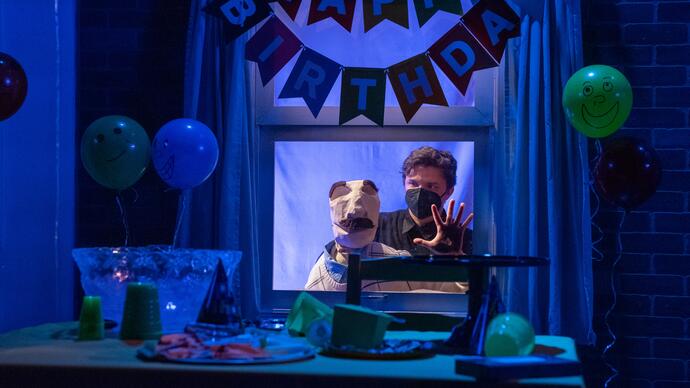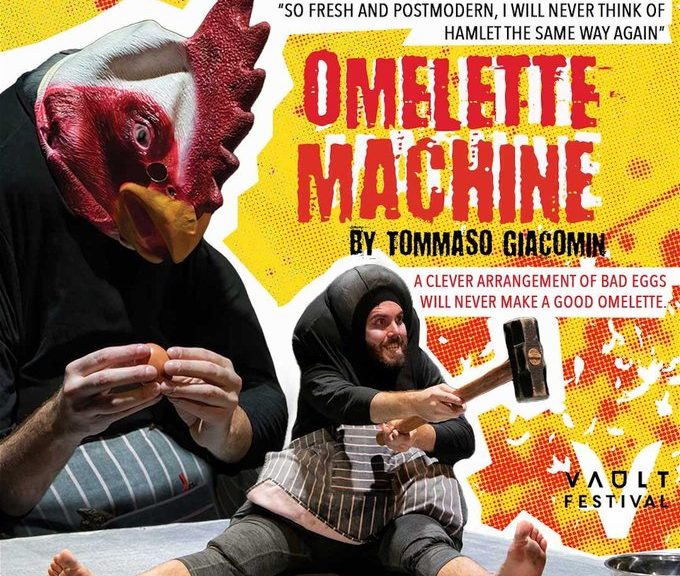 (3 / 5)
(3 / 5)
In a small, circular lecture theatre, we are brought an avant-garde expression of anxiety through the forms of dance, circus, music and .. oh a Llama.
From an Australian duo, Oat Milk & Honey quite effectively use their platform to share how anxiety feels, not only for the person experiencing it but also the impact on others.
There is no narration or vocals bar the occasional breath of the moving performer and pre-recorded voice overs but the silence is filled with beautiful, original compositions which occasionally go off-piste to express the interruption anxiety can create.
It feels relatively slow paced and it would have been interesting if there had been a change of pace. There was a little of this, interrupting the seriousness with an element of comedy when a performer comes in dressed as a Llama, reflecting the fact of serotonin created from watching Llama’s run which we hear at the beginning in a voice over.
There’s no doubt that both of these performers have great talent in their own right; a talented composer and musician and a very flexible and powerful dancer, circus performer. And each part of this performance is really interesting to watch but continues at the same pace which loses attention.
Oat Milk & Honey is transcendental and soothing, with a poke of humour but needed some different speed levels to keep the intrigue.






 (5 / 5)
(5 / 5)



 (4 / 5)
(4 / 5)

 (2 / 5)
(2 / 5)







